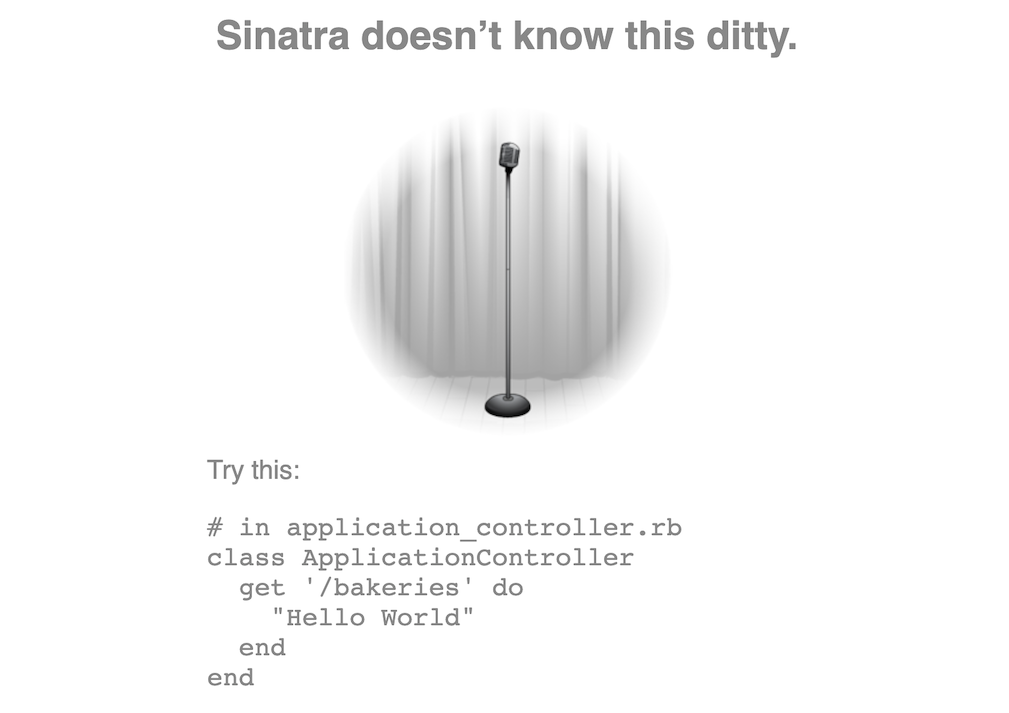- Handle multiple
GETrequests in a controller - Use the params hash to look up data with Active Record
- Send a JSON response using data from an Active Record model
- Use the
#to_jsonmethod to serialize JSON data
In this application, we'll be working on a JSON API to get a list of bakeries and their baked goods. We have two models, bakeries and baked goods, in a one-to-many relationship. The migrations are already set up. Here's what the ERD for these tables looks like:
To set up the application, run these commands:
$ bundle install
$ bundle exec rake db:migrate db:seedYou can run the app and explore your API in the browser by using the custom Rake task:
$ bundle exec rake serverThis is a test-driven lab, so run the tests to get started! You'll be
responsible for building out the associations between the models, and then
working on adding routes to the ApplicationController for the different
endpoints described in the test spec.
Update the Bakery and BakedGood models to set up the correct associations
based on the structure of the tables. Use the belongs_to and has_many Active
Record macros.
After setting up your models, it's time to work on your routes! Since this is your first lab in Sinatra, here's a recommendation on how to approach writing routes based on the deliverables below.
Let's work on the first deliverable, defining a route that responds to a GET
request to /bakeries and returns an array of JSON objects for all bakeries in
the database.
Start by running the server with bundle exec rake server. Then, in your
browser, visit that endpoint with the server running:
http://localhost:9292/bakeries. You should see
a helpful error message from Sinatra, like this:
Start by adding that route to your ApplicationController, like Sinatra suggests:
class ApplicationController
get '/bakeries' do
"Hello World"
end
endThen, refresh the browser. No more error message! Next, write out a bit of pseudocode. What do we need to do to solve this deliverable?
class ApplicationController
get '/bakeries' do
# get all the bakeries from the database
# send them back as a JSON array
end
endGreat! Now, we just need to translate that pseudocode into Ruby:
class ApplicationController
get '/bakeries' do
# get all the bakeries from the database
bakeries = Bakery.all
# send them back as a JSON array
bakeries.to_json
end
endTry refreshing the page now and make sure the response matches what you expect.
Then, run learn test and work through the remaining deliverables in a similar
manner.
Set up your ApplicationController so that the
default content type for responses use the
Content-Type: application/json header. Then, define routes that do the
following:
GET /bakeries: returns an array of JSON objects for all bakeries in the database.GET /bakeries/:id: returns a single bakery as JSON with its baked goods nested in an array. Use theidfrom the URL to look up the correct bakery. (HINT: you'll need to pass in some custom options to the#to_jsonmethod.)GET /baked_goods/by_price: returns an array of baked goods as JSON, sorted by price in descending order. (HINT: how can you use Active Record to sort the baked goods in a particular order?)GET /baked_goods/most_expensive: returns the single most expensive baked good as JSON. (HINT: how can you use Active Record to sort the baked goods in a particular order?)

